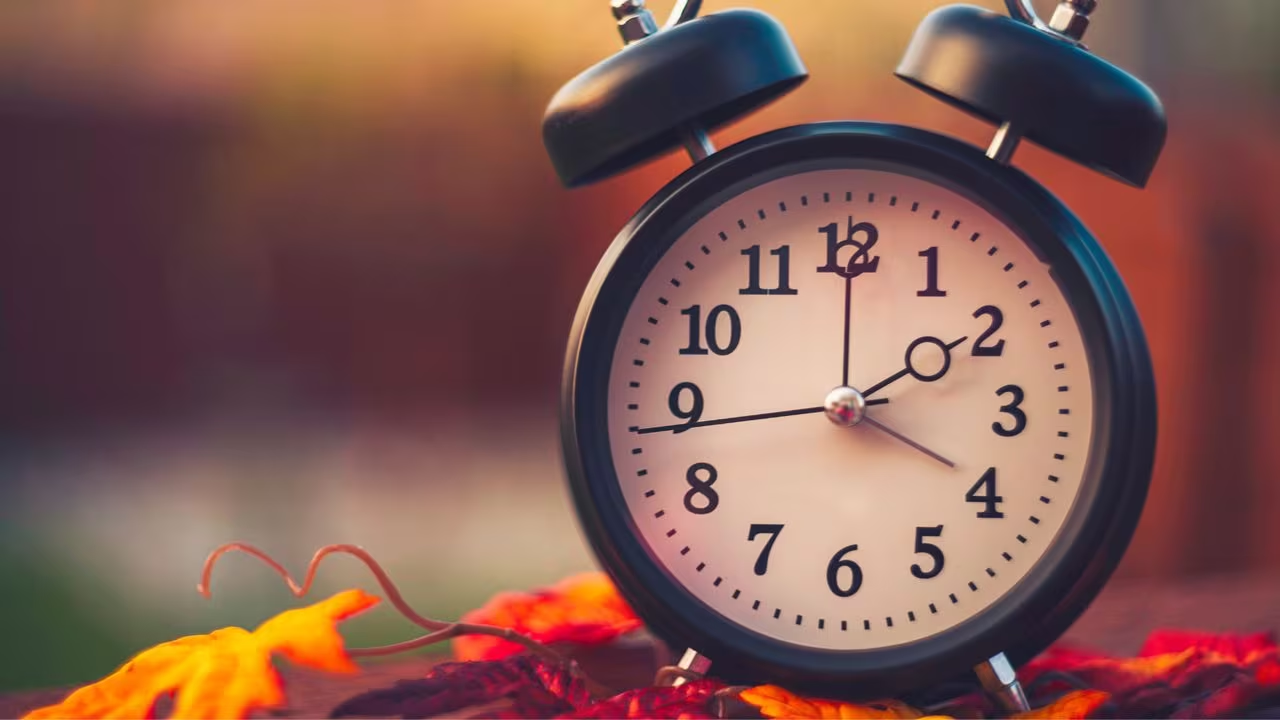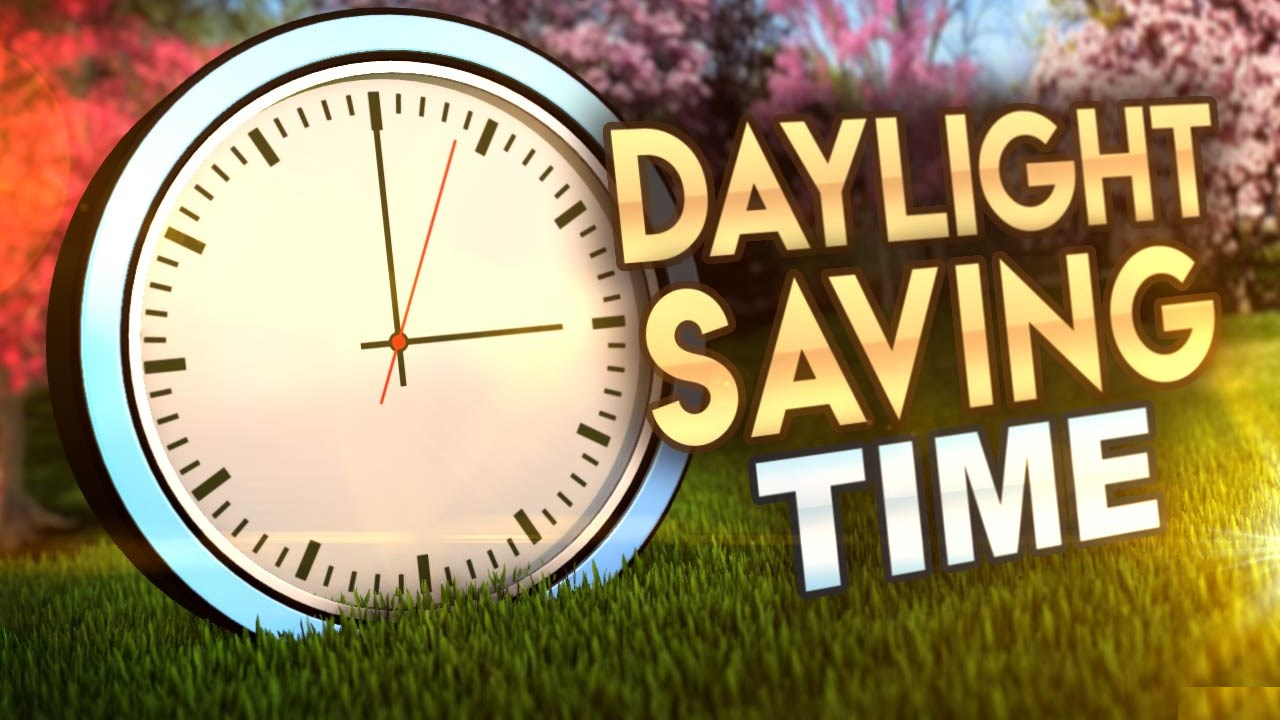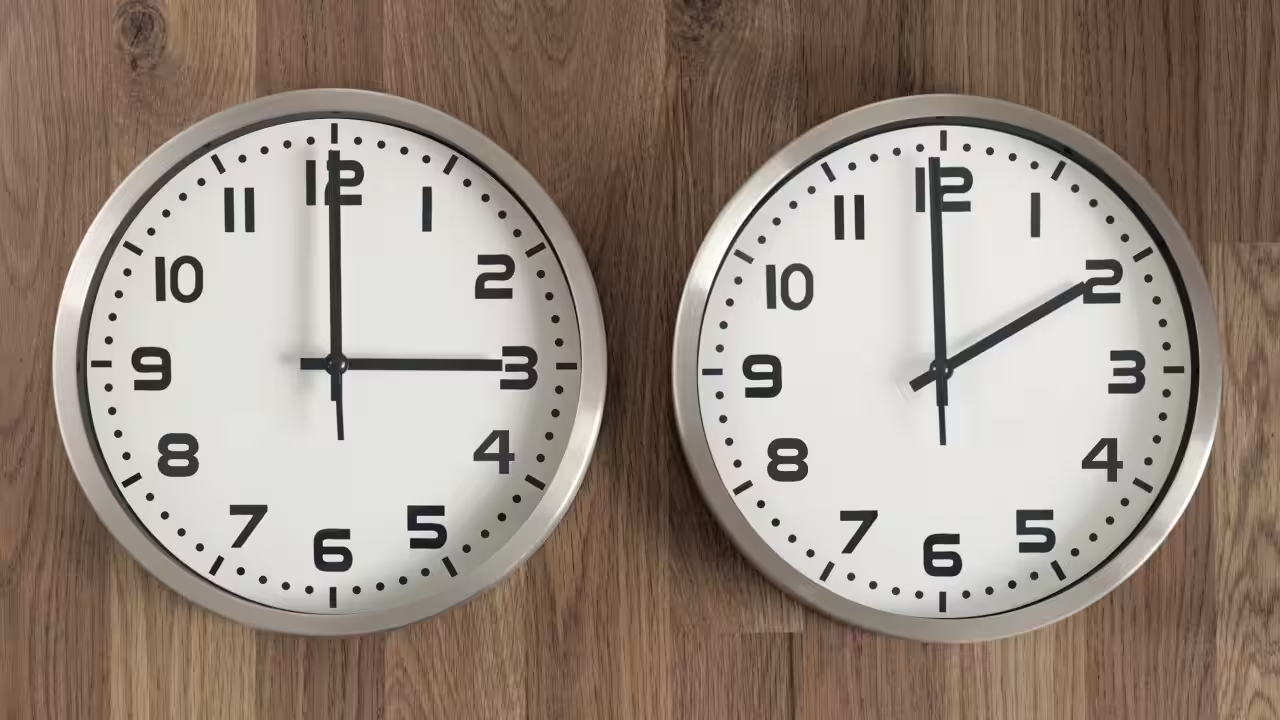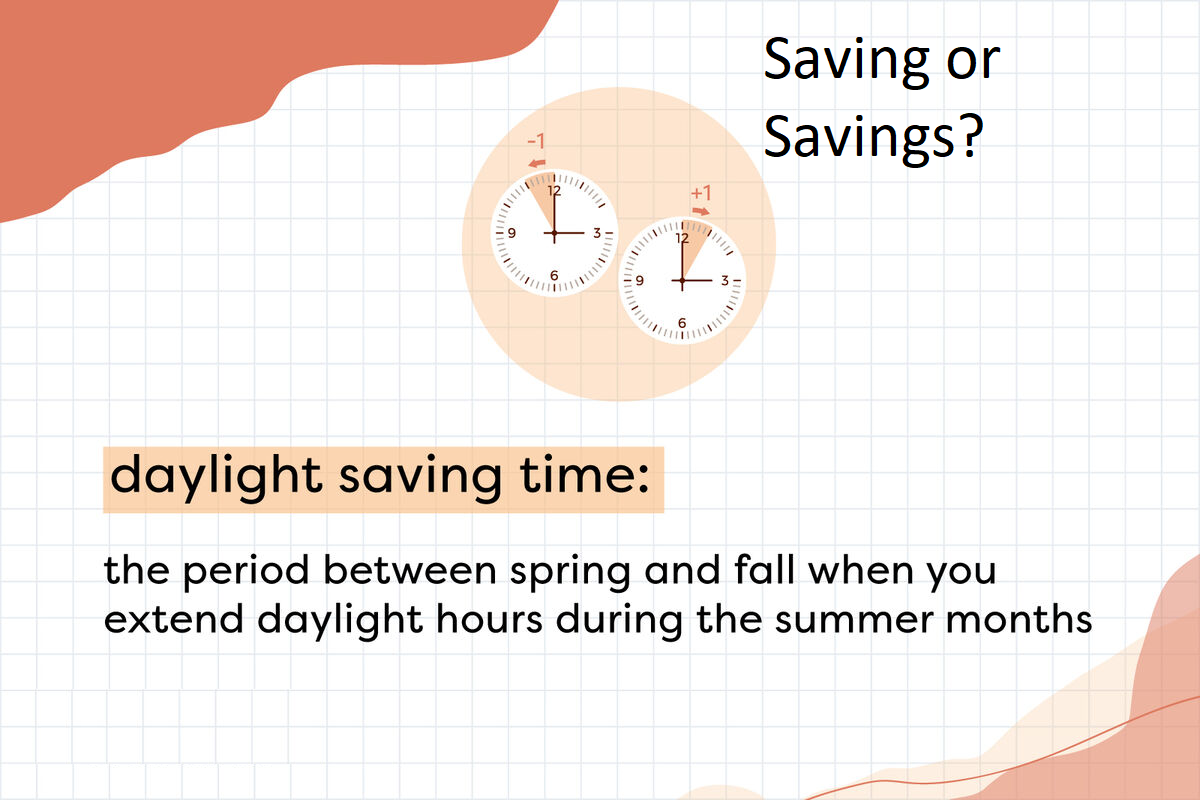When Is Daylight Savings Time Changing?
Discover the ultimate guide to Daylight Saving Time - When is daylight savings, its impact on your schedule, and how to make the most of this clock change.
Author:Iram MartinsReviewer:Elisa MuellerJan 05, 202456.4K Shares1.1M Views

As the seasons evolve, so does the annual tradition ofDaylight Savings, a moment when clocks leap forward or fall back, impacting our daily rhythms. Have you ever wondered, "When is Daylight SavingsTime this year?" Brace yourself for the biannual time shift that promises either an extra hour of sleep or a longer day of sunlight, depending on the direction of the clock's movement.
This time-honored practice, observed in various regions globally, aims to optimize daylight hours, offering a nudge towards energy conservation and maximizing natural light during waking hours. Join us on an enlightening journey as we uncover the intricacies of this temporal adjustment, exploring its history, impact on daily life, and tips to smoothly adapt to this temporal switch. Embrace the change and seize the opportunity to recalibrate your routines with the upcoming daylight savings.
What Is Daylight Saving Time And Which Countries Are Changing Their Clocks?
Daylight saving time (DST)is a practice of adjusting clocks seasonally to make better use of daylight hours. During the spring or summer, clocks are advanced by one hour, giving people an extra hour of sunlight in the evening. In the fall, clocks are turned back one hour, returning to standard time.
The idea behind DST is to reduce energy consumption by using natural light for longer periods. Proponents also argue that it can boost tourism and recreational activities, as well as improve people's mood and well-being.
However, DST also has its drawbacks. Some people find the time changes disruptive to their sleep patterns and schedules. There may also be some negative health effects, such as an increased risk of heart attacks and accidents in the days following the time change.
Which Countries Change Their Clocks?
Not all countries observe daylight saving time. In fact, the majority of countries on Earth, including most of those near the equator, do not use DST.
Here are some of the regions where DST is commonly observed:
- North America -Most of the United States, Canada, and Mexico
- Europe -Most of Western and Central Europe, but not Iceland, Belarus, Russia, and Turkey
- Australia -Most states and territories, but not Western Australia and Queensland
- New Zealand -All of New Zealand
It's important to note that even within these regions, there may be exceptions. For example, in the United States, Arizona (except for the Navajo Nation) and Hawaii do not observe daylight saving time.
Here's a map showing the countries that currently observe daylight saving time:
When Do Countries Change Their Clocks?
- The specific dates for changing clocks to and from daylight saving time vary by country. However, most countries make the switch on a Sunday in the spring and fall.
- In the United States, for example, clocks are typically advanced by one hour on the second Sunday in March and turned back one hour on the first Sunday in November.
Is Daylight Saving Time Going Away?
- There is growing debate about the future of daylight saving time. Some countries have already abolished the practice, citing the lack of clear benefits and the potential for negative health effects. Others are considering making the switch to permanent standard time or permanent daylight saving time.
- It's likely that the debate over daylight saving time will continue in the years to come. Only time will tell whether or not this practice will stick around for the long haul.
Unlocking The Mystery - When Is Daylight Savings Time Changing?
In the United States, Daylight Saving Time (DST) usually starts on the second Sunday of March and ends on the first Sunday of November.
Therefore, for 2024, Daylight Saving Time will:
- Start on Sunday, March 10th at 2:00 AM local time - This means that at 2:00 AM, clocks will spring forward one hour.
- End on Sunday, November 3rd at 2:00 AM local time -This means that at 2:00 AM, clocks will fall back one hour.
However, it's important to note that not all states in the US observe Daylight Saving Time. Currently, the states of Arizona and Hawaii do not participate in DST.
Unlocking The Mystery In Other Countries
- Choose a specific country -Tell me which country you're curious about, and I can share details about their DST history, current practices, and any upcoming changes.
- Explore global trends -I can provide information about which countries currently observe DST, the reasons behind their implementation or abolishment, and ongoing debates about its future.
- Compare approaches -Learn about different systems for adjusting clocks, such as permanent standard time, permanent DST, or alternative proposals like half-hour shifts.
Unlocking The Historical Mystery
- Unravel the past -Discover the origins of DST, how it has evolved over time, and the changing justifications for its use.
- Travel through time -Explore specific years or events where DST played a significant role, like its impact on wartime schedules or major public debates.
- Dig into the data -Analyze research findings on the potential benefits and drawbacks of DST, including its effects on health, energy consumption, and economic activity.
Economic Effects Of Daylight Saving Time?
These are the five economic effects of daylight saving time is accurate and concise. Here's a breakdown of each point with some additional details:
1. Lost Productivity
- Changing clocks disrupt sleep patterns, leading to temporary drowsiness and decreased cognitive function. Studies suggest a dip in productivity and increased absenteeism after the springtime change.
- The economic cost of lost productivity due to DST is estimated to be in the millions of dollars.
2. Health Consequences
- The disruption of sleep cycles can have negative health impacts, including increased risk of heart attacks, strokes, and depression.
- Research also suggests a link between DST and increased traffic accidents, though the evidence is somewhat mixed.
3. Impaired Judgment
- Similar to the effects on productivity, sleep disruption can hinder cognitive functions like decision-making and judgment. This could potentially lead to financial losses or missed opportunities.
- Some studies have found increased stock market volatility and gambling activity following the time change, potentially related to altered judgment.
4. No Effect On Energy Use
While initially implemented to save energy, research on the impact of DST on energy consumption is inconclusive. Some studies suggest minimal savings, while others even find increased energy use due to changes in heating and cooling patterns.
5. Complicated Time Zone Coordination
DST can create confusion and scheduling issues for individuals and businesses in regions with overlapping time zones. This can lead to missed appointments, communication breakdowns, and potential economic losses.
The economic effects of DST are complex and vary depending on factors like location, industry, and individual experiences. The debate around DST continues, with arguments both for and against its continued implementation.
Have Countries Tried To Stop Using Daylight Saving Time?
The quest for that extra hour of sunshine in the evening isn't universally embraced. Many countries have experimented with daylight saving time (DST), only to decide it wasn't worth the hassle. Let's dive into some notable examples of countries saying "hasta la vista, baby" to DST:
Europe
- Austria -After over 70 years of DST, Austria waved goodbye in 2018, citing a lack of energy savings and potential health drawbacks.
- Belarus -Bidding farewell to DST in 2011, Belarus opted for permanent standard time, claiming it improved sleep patterns and public health.
- Russia -In 2014, Russia ditched DST for the second time, returning to permanent standard time due to public dissatisfaction and minimal energy benefits.
North America
- Arizona -This desert state has never observed DST, preferring the consistent sunshine throughout the year.
- Hawaii -Similar to Arizona, Hawaii enjoys year-round sunshine and has no need for DST adjustments.
Beyond
- Brazil -After a brief stint with DST in the 1980s, Brazil reverted to permanent standard time in 2019, citing economic and logistical challenges.
- India -Though it experimented with DST in the 1980s, India found it disruptive and unnecessary, sticking with permanent standard time since then.
The Debate Rages On
The movement against DST isn't limited to these countries. Even in regions like the United States, there's growing public and legislative support for abolishing the biannual clock change. Concerns about health impacts, economic disruptions, and the overall effectiveness of DST fuel the debate.
Will The Sun Set On DST?
Only time will tell if the world abandons DST altogether. However, the increasing number of countries ditching the practice suggests that the tide might be turning towards permanent standard time. So, the next time you find yourself grappling with a time change, remember, you're not alone in questioning the value of that extra hour of daylight.
Is It Daylight “Saving” Or “Savings” Time?
The correct term is Daylight Saving Time, not Daylight Savings Time. While "savings" may sound more natural, in this case, it's grammatically incorrect. Here's why:
1. Saving, with the singular "ing" form, suggests that the practice is preserving or prolonging daylight. This accurately reflects the purpose of DST, which is to shift daylight hours from the morning to the evening during summer months.
2. Savings, with the plural "s" form, implies that there are multiple aspects of daylight being saved, which isn't the case. It also creates confusion with the concept of financial savings, further obscuring the true meaning of the phrase.
Both Forms Are Commonly Used
- Daylight Saving Time -is considered the grammatically correct and preferred term by dictionaries and style guides.
- Daylight Savings Time -is extremely common in everyday speech and writing, appearing in news articles, informal conversations, and online discussions.
While Daylight Saving Time is the proper term, Daylight Savings Time is widely understood and accepted in informal contexts. The important thing is to be aware of the grammatical distinction and choose the appropriate form depending on the situation.
Additional Points
- Some variations exist, such as Daylight-Saving Time and Daylight Time.
- DST is a common abbreviation for both Daylight Saving Time and Daylight Savings Time.
- Regardless of the term used, the purpose and practice of adjusting clocks for summer daylight remains the same.
So, whether you say "Saving" or "Savings," as long as you understand the concept and communicate it effectively, that's what matters most!
Using Daylight Time (DT) Versus Standard Time (ST)
Here's a breakdown of the key differences, potential benefits, and considerations when it comes to Daylight Time (DT) and Standard Time (ST)
1. Daylight Time (DT)
- Clocks are set one hour ahead of Standard Time -during spring and summer months.
- Goal -To maximize evening daylight hours and potentially reduce energy consumption.
Potential Benefits
- Increased outdoor activities and recreation
- Reduced lighting energy use in the evenings
- Possible positive impact on mood and social interactions
Considerations
- Disruption to sleep patterns and circadian rhythms
- Increased health risks (e.g., heart attacks, strokes) in the days following the time change
- Economic disruptions (e.g., scheduling conflicts, travel delays)
2. Standard Time (ST)
- The "original" time -based on the sun's position in the sky.
- Clocks are not adjusted -throughout the year.
Potential Benefits
- More consistent sleep patterns and circadian rhythms
- Reduced health risks associated with time changes
- Easier coordination of schedules and travel
Considerations
- Less daylight in the evenings during winter months
- Potential increase in energy consumption for lighting
Debate And Decisions
- The debate about the use of DT vs. ST continues, with no clear consensus on the best approach.
- Some countries and regions have abolished DT, while others are considering it.
- Factors influencing the decision include:
- Energy savings
- Health impacts
- Economic effects
- Public opinion
- Geographic location
Ultimately, the decision of whether to use DT or ST depends on a variety of factors and priorities. It's important to weigh the potential benefits and drawbacks of each approach to make an informed decision that best suits the needs of a particular community or region.
FAQ's About When Is Daylight Savings
What Is The Correct Time For Daylight Savings?
Most of the United States begins Daylight Saving Time at 2:00 a.m. on the second Sunday in March and reverts to standard time on the first Sunday in November. In the U.S., each time zone switches at a different time. In the European Union, Summer Time begins and ends at 1:00 a.m. Universal Time (Greenwich Mean Time).
Do Clocks Go Back Tonight?
The clocks change twice a year — once in March when they go forward an hour, and once on the last Sunday of October, when they go back an hour. We gained an extra hour at 2am on Sunday, October 29. Usually, your smartphone and laptop will update automatically.
Do We Lose An Hour?
It's one of the most common questions people have been asking for decades. Do I lose an hour or gain an hour with Daylight Saving Time? Fall is always when you “fall back” an hour, so you gain an hour. Spring you spring forward and lose an hour.
Conclusion
As the hands of time continue their perpetual dance, the annual ritual of Daylight Saving Time remains an integral part of our calendar. Understanding when Daylight Saving Time occurs each year empowers us to embrace the seasonal shift, whether it be gaining an extra hour of sleep or reveling in an extended day of sunlight. This temporal transition, while sometimes met with groans or excitement, serves a purpose beyond merely adjusting our clocks.
As we bid adieu to discussions about "when is Daylight Saving Time," let us carry forward the awareness gained from this time change, leveraging it to optimize our routines, savor the bright moments, and gracefully navigate the cyclical nature of time's passage. Embrace the change, adapt to the shifting hours, and let the annual dance of Daylight Saving Time remind us to cherish both daylight and the precious moments it brings.
Jump to
What Is Daylight Saving Time And Which Countries Are Changing Their Clocks?
Unlocking The Mystery - When Is Daylight Savings Time Changing?
Economic Effects Of Daylight Saving Time?
Have Countries Tried To Stop Using Daylight Saving Time?
Is It Daylight “Saving” Or “Savings” Time?
Using Daylight Time (DT) Versus Standard Time (ST)
FAQ's About When Is Daylight Savings
Conclusion

Iram Martins
Author
Iram Martins is a seasoned travel writer and explorer with over a decade of experience in uncovering the world's hidden gems. Holding a Bachelor's degree in Tourism Management from the University of Lisbon, Iram's credentials highlight his authority in the realm of travel.
As an author of numerous travel guides and articles for top travel publications, his writing is celebrated for its vivid descriptions and practical insights.
Iram’s passion for cultural immersion and off-the-beaten-path adventures shines through in his work, captivating readers and inspiring wanderlust.
Outside of his writing pursuits, Iram enjoys learning new languages, reviewing films and TV shows, writing about celebrity lifestyles, and attending cultural festivals.

Elisa Mueller
Reviewer
Elisa Mueller, a Kansas City native, grew up surrounded by the wonders of books and movies, inspired by her parents' passion for education and film.
She earned bachelor's degrees in English and Journalism from the University of Kansas before moving to New York City, where she spent a decade at Entertainment Weekly, visiting film sets worldwide.
With over 8 years in the entertainment industry, Elisa is a seasoned journalist and media analyst, holding a degree in Journalism from NYU. Her insightful critiques have been featured in prestigious publications, cementing her reputation for accuracy and depth.
Outside of work, she enjoys attending film festivals, painting, writing fiction, and studying numerology.
Latest Articles
Popular Articles


